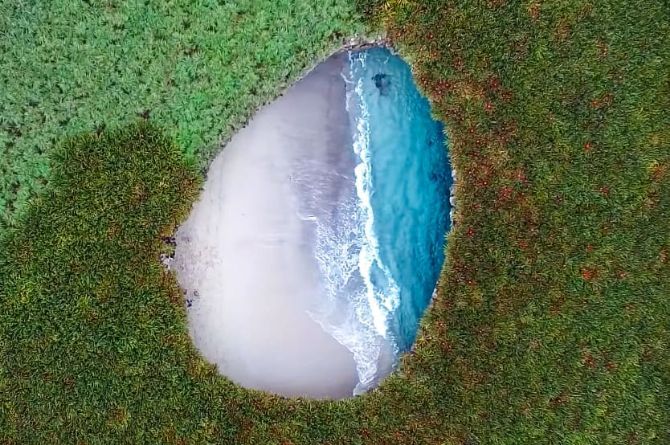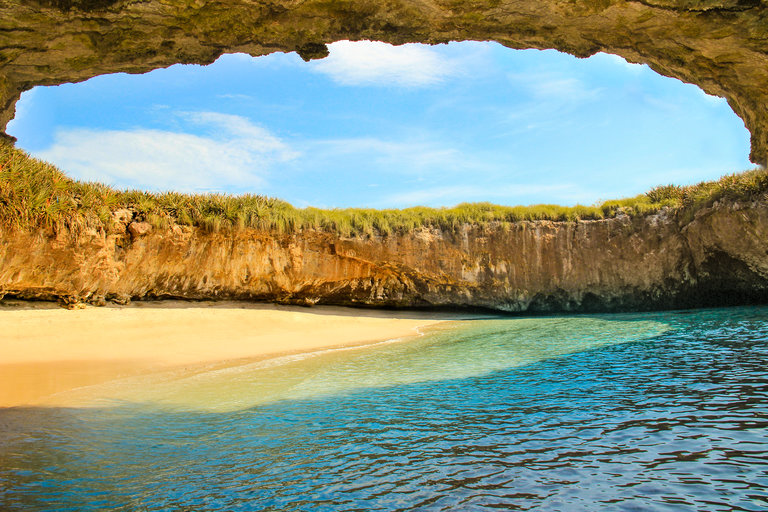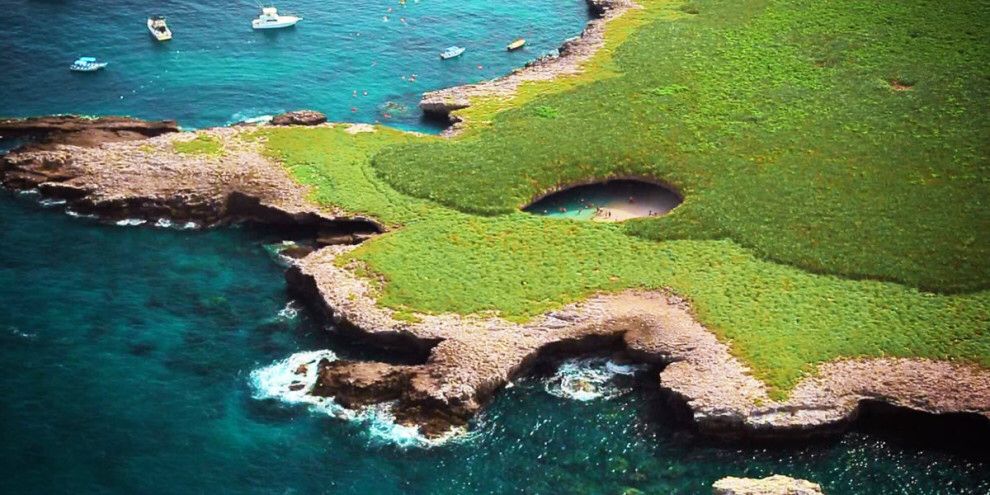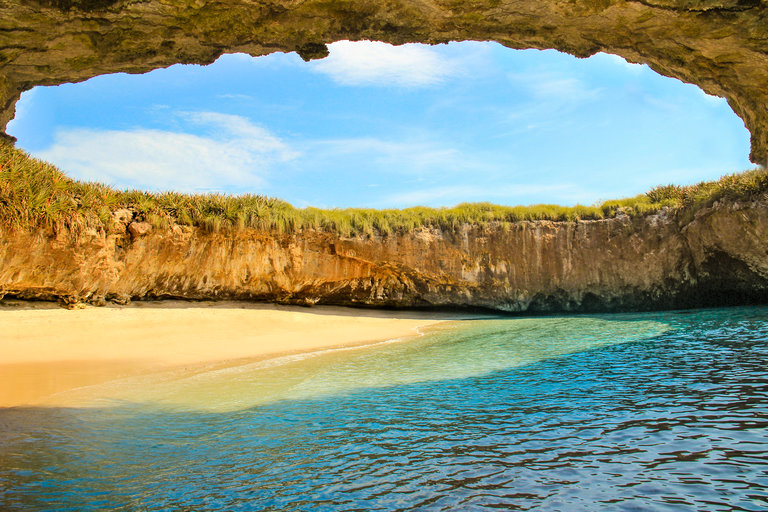
Playa del Amor the “beach of love” more typically called the Hidden Beach Mexico, is a secluded sandy cavern on one of the islands that make up Marietas Islands National Park, located on the north end of Bahía de Banderas, an hour northwest of Puerto Vallarta and only fifteen minutes from Punta Mita, Nayarit.
The Marieta Islands are a group of uninhabited islands about 35 km north of Puerto Vallarta, or one-hour boat ride, known for its breathtaking landscapes, wildlife and hidden cave beach.The Marietas Islands were originally formed many thousands of years ago by volcanic activity.
Hidden beach access is available Wednesday and Sunday only
How to get to the hidden beach Marieta Island
Only 116 persons by day are permitted to get in/tour the hidden beach per day Wednesday or Sunday, the only way to get there is through a guided boat tour from Puerto Vallarta.Upon arrival you can Snorkel to observe an incredible underwater wonderland; kayak in the warm waters of the Marietas Islands; and watch for exotic birds flying in their natural habitat. Look out for dolphins, whales, giant manta rays, and sea turtles as an experienced guide directs your attention to the wonders of nature on this eco-adventure.
What is included?
- Lunch
- Open Bar
- Use of snorkel and kayak equipment
- Stand-up Paddle Boarding
Tour depart 7:00 AM from the Maritime Terminal in Puerto Vallarta
What is not included?
- Gratuities
- Hotel pickup and drop off
- Scuba Diving (additional fees)
- Natural reserve federal tax (90 Mexican Pesos)
- A port fee of MXP 28 must be paid in cash before boarding your boat.


Hidden beach Playa del Amor history
A GAPING HOLE IN THE surface of the lush green island opens onto a secret beach, with ample shade, sun, and crystal-clear water.
Playa del Amor, commonly known as the Hidden Beach, is a feature of one of the Marieta Islands, located some 22 nautical miles west of Puerto Vallarta, Mexico, at the mouth of Banderas Bay. It looks like something out of a fantasy novel: a wide, sandy cavern with the blue waters of the Pacific rushing in. The Marieta Islands is a group of uninhabited islands formed by underwater volcano eruptions. They are natural wonders, but it was something other than the volcanic activity that brought the burrowed beach to light.
It is rumored that the hole that created the Hidden Beach was a result of deliberate bombings. The Marieta Islands have always been completely uninhabited, making them ideal sites for military testing by the Mexican government. Beginning in the early 1900s, weapons and artillery were tested on the Marieta Islands, a safe distance from Mexican citizens but not so safe for Marieta topography. Test bombs are the known cause for many caves and rock formations on the island, possibly including the Hidden Beach.
In the 1960s, scientist Jacques Cousteau led a protest against harmful human activity on the islands. In 2005, the islands were finally named a national park, Parque Nacional Islas Marietas, making swimming, kayaking, sunbathing, and other forms of recreation the only activity, and prohibiting hunting and fishing around the islands. Also, later on, the park was designated as a UNESCO MAB Biosphere Reserve. Extensive military testing damaged flora and fauna on the island for decades, but many years of peace have replenished the islands’ pristine waters and marine life.
The Hidden Beach is invisible from the outside and is only accessible through a long water tunnel that links the beach to the Pacific Ocean. There is approximately six feet of space above water level, so visitors can arrive at the beach by swimming or kayaking. The islands remain uninhabited but are frequently visited by tourists who come to enjoy the diverse marine wildlife and the unique tropical Eden of Playa del Amor.

